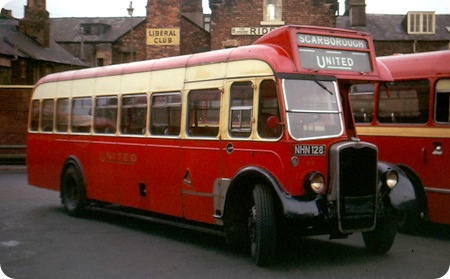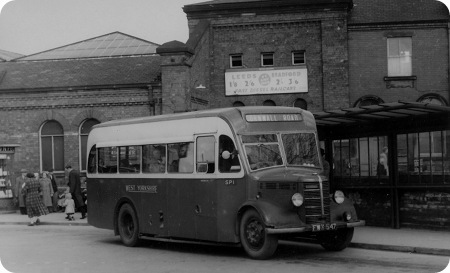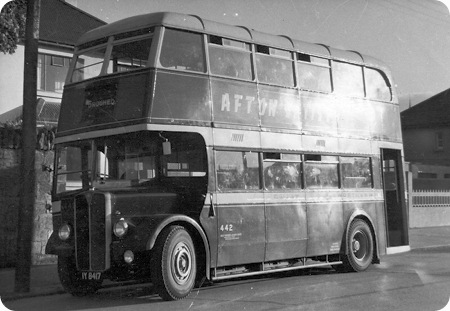United Automobile – Bristol LL6B – NHN 128 – B51
United Automobile Services
1950
Bristol LL6B
ECW B39R
This bus has been on this website before it was one of the first and I did not research into it as well as I could of done, but as this bus is in the process of being preserved I think I should do it justice.
This bus entered service with United in 1951 as a LL5G – B39R with a fleet number of BG460. All that coding meant it was classed as a long version of a Bristol L with bus seating and livery, with a 7.0 litre 5 cylinder Gardner engine.
In 1953 (I had 1963 here but from a comment below by David Hudson I was ten years out) it would appear it was re-engined with a Bristol 8.1 litre 6 cylinder engine the seating was reduced to 33 and the class changed to duel purpose making it a LL6B – DP33R with a fleet number of BBE1. At this time I think it would of been re-painted to Cream and Red more or less a reversal of the above shot which was the colour scheme for United ‘Express’ vehicles.
In 1961 it seems it was re-classed back to a bus I am not sure if the seating was increased back to 39 though (see David Hudsons comment), the fleet number was also changed to BB51 but later that year the the first ‘B’ which stood for Bristol was dropped. The bus must have been repainted back to Red and Cream as the above photo was taken after 1964.
Two years later 1966 it was withdrawn from service with United passing to W Norths Limited, Sherburn-in-Elmet (dealer) between Leeds and York in 1967. Fortunately it was bought by a contractor as a staff bus and not scrapped, I am not sure how long it was with the contractor but eventually it was bought by a private individual for preservation.
Looking along the side of B51, an extra strip of aluminium beading beneath the windows (curving down towards the front) can be seen. This was presumably added by United as extra brightwork, when it was upgraded to express standard and repainted cream and red. On being demoted back to bus duties, and resuming its original red and cream livery, it looks like the beading was simply painted over. West Yorkshire Road Car gave the same treatment to its LS5G express vehicles in later life, when converting them to buses. Shame on both counts that the beading couldn’t have been just left polished as nature intended.
Brendan Smith
When I was a lad one holiday the family went on service 43 from Leeds to Scarborough. I think the bus was a Lodekka. On our return we joined a long queue at Westwood to return to Leeds. An inspector announced that a bus was going to depart but would be nonstop to Seacroft and Vicar Lane only. The bus came on to the stand and was a West Yorkshire L. The driver must have had a date with a lady as we literally flew to Leeds. Although this was donkey years ago it has stuck in my mind. Later in my career I drove Bristol Ks at Southend corporation which were on hire from Eastern National.
Philip Carlton
I’m building a 4mm scale layout based in the Northeast and would like a model of this bus (preferably in United livery)
Does anybody out there know of a source?
Thanks,
Trevor Elliot,
Bellingham WA USA
As the present owner of NHN 128, just a few comments on its history. Vehicle converted to dual purpose in 1953, using seats from earlier L6Bs. Fitted with Bristol engine at this time. 1961 re-seated to B39R using seats from earlier vehicles with wooden grab rails. Sold to Buxted Chickens (Ross Poultry) seeing service until 1976. Awaiting restoration following fire damage in 1980s
David Hudson
In answer to Trevor Elliot, Corgi OOC made that model (I have two) I bought them off e-bay, I think I paid about £8.00 each plus P+P
Jimmy
18/12/12 – 07:53
In the early 50’s I was a driver at Scarborough depot seasonal only, but later transferred to Redcar on a permanent basis. I spent many an hour driving up and down Scarborough seafront, but my favourite run was service 58 Scarborough to Whitby and Middlesbrough.
The fleet numbers I remember were BB,BBE,BH,BG. My memory isn’t too good now,but if you think I can be of any help don’t hesitate to ask me.
Robert Robinson



